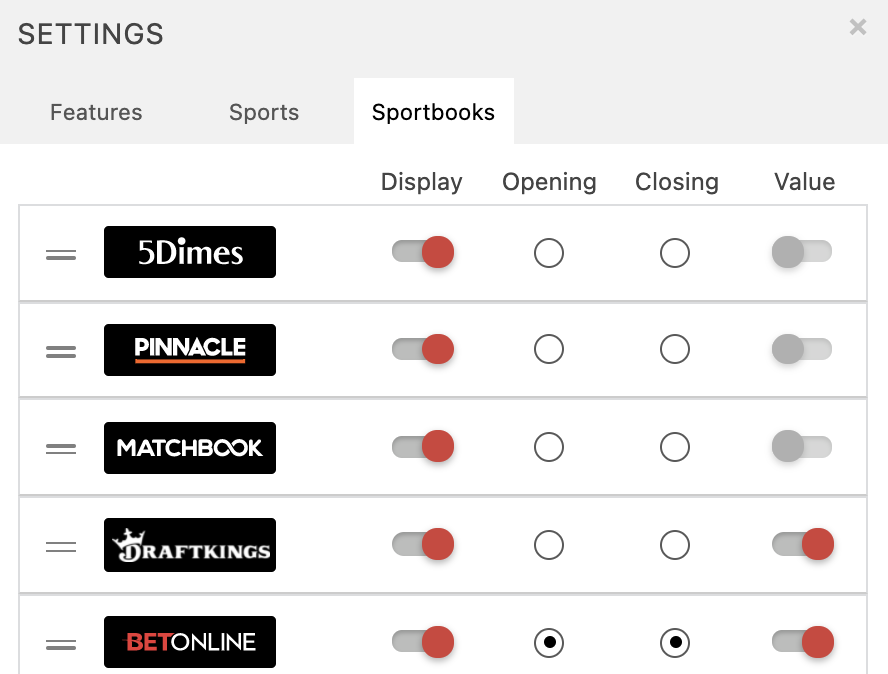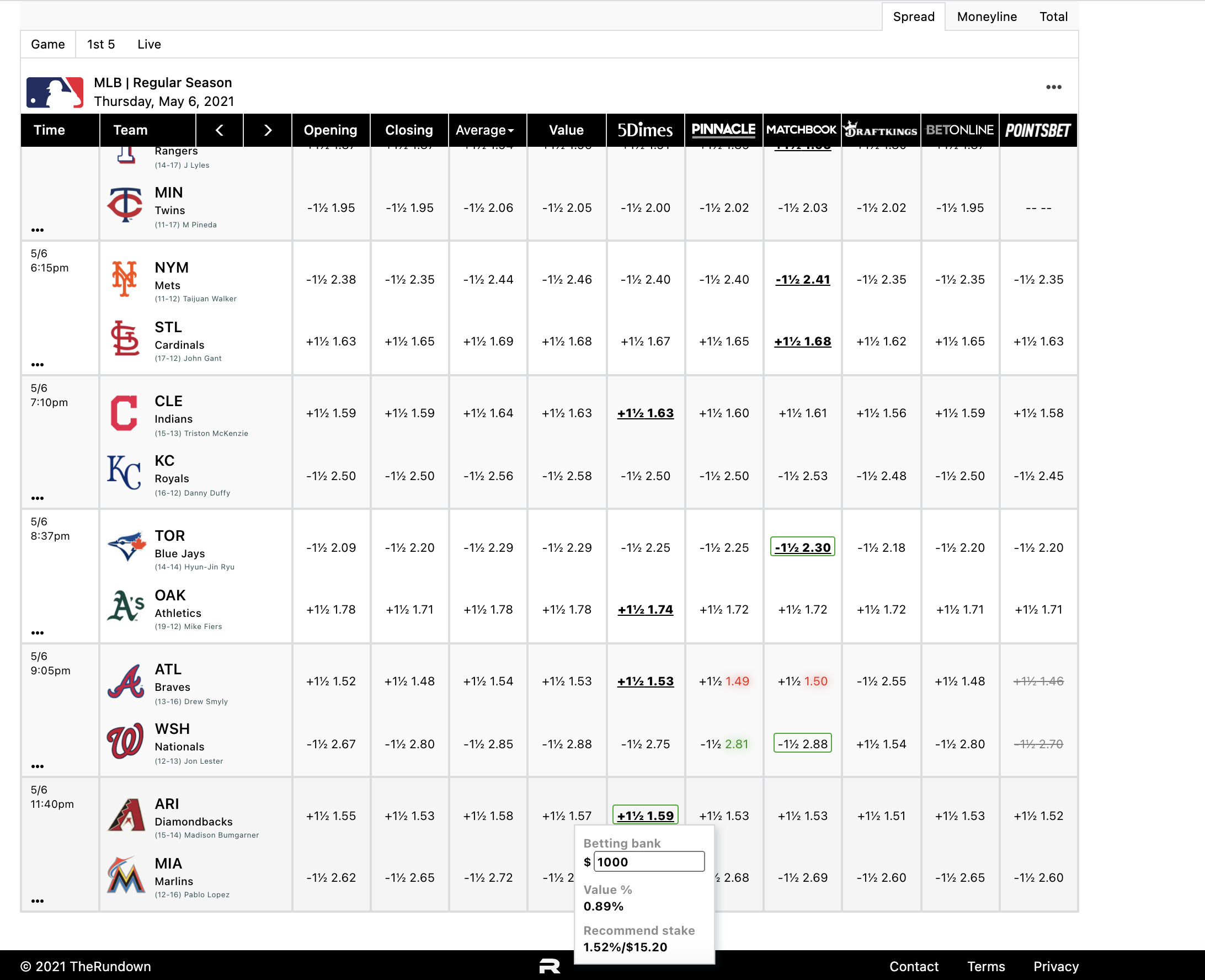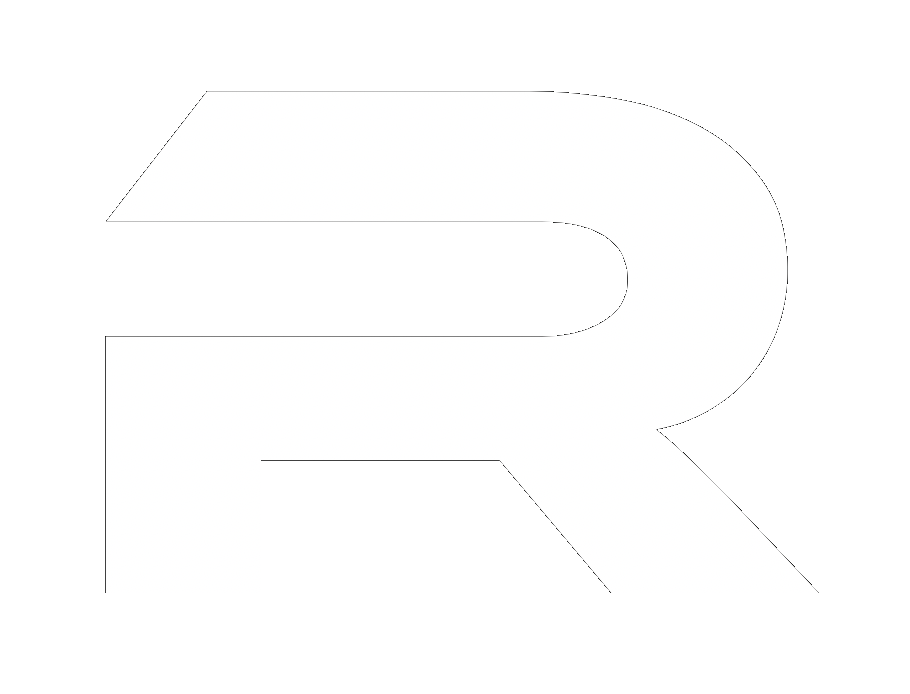- Have any questions?
- WhatsApp: +44 7584676158
- [email protected]
TheRundown's Value Tool

At TheRundown, we offer a tool that helps our users to identify ‘value’. Simply by either selecting a basket of bookmakers or using TheRundown’s preselected choices, value will be displayed where available alongside the odds.
What is value and why is it important?
For a more in depth discussion on value, please head to the following article. Briefly, however, a value bet may be defined as:
A value bet is one in which the odds offered are greater than the true probability of that event occurring.
The ability to both identify value and place the subsequent bets is an essential part of any successful gambler’s arsenal, only value bets will ensure that you are profitable in the long run.
Why are the bookmakers relevant?
All bookmakers are at once identical to one another and at the same time completely different.
Each will display odds on the same sports and markets, accept your bets and grade the winners and losers. They will all have an idea of what they believe the true odds to be at any given time for any given event and market, and will then discount these odds by a percentage to those that are ultimately displayed. This is known as their margin, also known as the ‘juice’, ‘overround’ or ‘vigorish’ (depending on which side of the Atlantic you originate from).
Delving into this for a moment, if a bookmaker were to offer odds on coin toss, there is a good chance that they would be as follows: Heads -110 (1.909 in decimal terms),Tails -110. Bet your $10 on heads, if it lands then they will payout $19.09 ($10 original stake plus profit of $9.09). Throw the coin 500 times with 500 people betting heads and 500 people betting tails and these are what the numbers look like from the bookmaker’s point of view:
Bookmaker takes $10*500*2 = $10,000
If 500 tails bookmaker pays out $10*500*1.909 = $9,545.46
If 500 heads bookmaker pays out $10*500*1.909= $9,545.46
In fact any combination of heads and tails thrown in your 500 spins will cause an identical payout of $9,545.46. It is this bookmaker profit of $454.54 that is the margin, or in percentage terms 4.55% (454.54/10000).
If a bookmaker is unfailingly accurate at pricing up a market and applying a margin, it would be impossible to earn money through wagering with them.
The differences are what make things interesting, however. Whilst the end game of calculating true odds is universal, different methods are used when attempting to reach this position.
There are bookmakers who use in house linesmakers to arrive at starting odds and then allow their lines to be essentially shaped by the market, fluidly adjusting prices according to the volume and size of the bets placed, albeit with a careful eye watching from above in the form of the linesmakers. Other bookmakers may rely on third parties for their odds and so will need to ensure that these are capable of maintaining accuracy. Others still may take a more reactionary and hand on approach, using judgement to ascertain when odds may need to be moved. The management of risk is key to maintaining a successful bookmaking business.
Using one or other of the above approaches, or a combination of these, may lead to one bookmaker being more ‘accurate’ than another and it is accuracy that we are looking for. If we are able to understand which bookmakers are generally ‘correct’, then we can have faith in their odds, once we have faith in their odds then we arrive at a starting point from which we are able to compare against the rest of the market.
TheRundown has experience in these matters and has pre-selected a basket of bookmakers that we believe best represents the state of the market at any one time. You may have a different opinion, however, and for this reason we allow our users to select their most trusted bookmakers against which all others may be compared.
How is the value calculated?
In order to know their estimated true odds, we firstly need to know how bookmakers are applying their margin.
In the previous coin toss example it appears to be fairly straightforward. The bet is a 50:50 shot and so it would seem obvious to apply the desired margin equally, therefore deflating the odds by the same amount. What if we knew that a disproportionate number of people were looking to bet on the heads side? And these people were not particularly sensitive to the odds? Does the expected volume of bets alter how bookmakers apply their margin?
Well, the answer is probably yes. I say ‘probably’ because the only people who really know how bookmakers are applying their margin are the bookmakers themselves, and each one is likely to be slightly different. It is generally accepted, however, that they use what is known as ‘favourite - longshot bias’.
The principle is as follows, gamblers generally overvalue longshots, that is, odds over +100 (2.00) and undervalue favourites, odds under +100 (2.00). The result of this is that they are more likely to want to place a bet at high odds. From there it turns into a simple economic issue, bookmakers are able to offer a relatively lower price for the longshot, knowing that there is sufficient demand to ‘fill’ that price. As a quick, aside, tip, it also illustrates that a blind, unresearched bet on the favourite is likely to be a better bet than one on the outsider.
I am not going to delve into the mathematics here of exactly how the margin application works by using favourite-long shot bias, but a ream of research has already been performed which does confirm that it exists and it is using this method that TheRundown arrives at the ‘true’ odds for each bookmaker, event and market. Averaging then occurs among the selected bookmakers to arrive at the estimated true odds for that basket, this number is then used to compare against the remaining bookmakers to ascertain if any value, according to these parameters, is available.
How do I use the tool?
This is the easy part!
Simply head to settings - sportsbooks and check the slider to either select or deselect your chosen bookmakers for calculating value. As mentioned above, the estimated true odds will then be calculated, averaged and used as a reference against other bookmakers’ odds.

If you would rather use TheRundown’s default selection then simply deselect all bookmakers.
Odds that currently offer value will be displayed surrounded by a green box, hover over the box and the value percentage will be displayed along with the recommended staking size, according to the recommended Kelly staking system.


